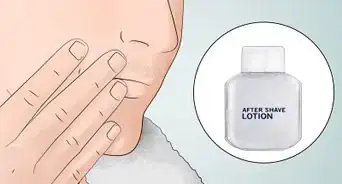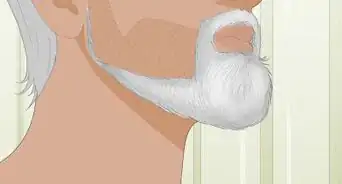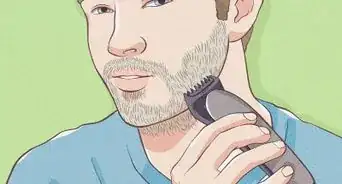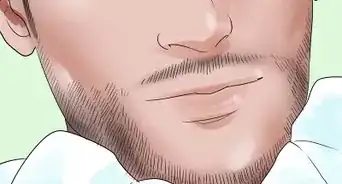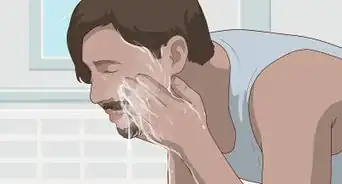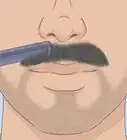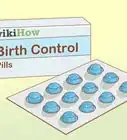This article was co-authored by Mohiba Tareen, MD. Mohiba Tareen is a board certified Dermatologist and the founder of Tareen Dermatology located in Roseville, Maplewood and Faribault, Minnesota. Dr. Tareen completed medical school at the University of Michigan in Ann Arbor, where she was inducted into the prestigious Alpha Omega Alpha honor society. While a dermatology resident at Columbia University in New York City, she won the Conrad Stritzler award of the New York Dermatologic Society and was published in The New England Journal of Medicine. Dr. Tareen then completed a procedural fellowship which focused on dermatologic surgery, laser, and cosmetic dermatology.
There are 9 references cited in this article, which can be found at the bottom of the page.
This article has been viewed 145,642 times.
Ingrown hairs, or pseudofolliculitis barbae, occur when the hair grows back into the skin and causes an inflammatory reaction that leads to an infection.[1] Ingrown hairs are most common in people with tightly curled hair because the natural curl tends to push the hair back into the skin. They are more common in areas where hairs have been removed, especially after shaving, tweezing, or waxing. Learn how to safely remove an ingrown hair so you can reduce the risk of scarring or infection.
Things You Should Know
- Make a warm compress, then nudge the hair to the surface of your skin with tweezers; after, let the hair rest.
- Use spot exfoliation to remove the hair, or moisturize it with honey (or another moisturizer), but don’t dig out the hair or remove other hairs from that area.
- To prevent ingrown hairs, don’t use products with alcohol; apply a warm compress before shaving and massage oil or cream into your face instead.
Steps
Using a Warm Compress to Remove the Ingrown Hair
-
1Make a warm compress. Soak a clean washcloth with very warm water. Place the warm rag over the area with the ingrown hair. Leave the rag on for three to five minutes, or until the washcloth cools down.[2]
- Repeat at least three to four times before doing anything else to the ingrown hair.
-
2Nudge the hair to the surface. After you have covered the area with a warm compress multiple times, you can try to get the hair to break the surface. Very carefully, use a pair of tweezers to gently nudge the ingrown hair to the surface. Try to straighten the hair to make it start growing the right way.[3]
- Find the free end of the hair with the tweezers. Gently pull that hair out of the skin. Do not pull the hair all the way out. Just pull the free end out of the skin. If you pluck the hair out, another may grow in its place.
- Don’t try to dig out the hair. If you can’t grab the free end, wait until the next day and try again.
- Use tweezers that have been disinfected with alcohol.
Advertisement -
3Let the hair rest as you soak it. Once the free end of the ingrown hair has been pulled out, leave it alone for 24 hours. While the skin is resting, continue to place the very warm compress over the hair every two hours. Check to make sure the free end of the hair remains free.[4]
- Don’t pull the hair out. That may cause it to grow back deeper and get ingrown again.
Using Home Remedies to Treat Ingrown Hairs
-
1Try spot exfoliation. You may also use spot exfoliation to help remove the ingrown hair. Remember to be very careful with the area. Use gentle, circular motions to try and dislodge the hair. Make a natural exfoliant at home instead of buying something from the store.[5]
- Mix ½ teaspoon of baking soda, sea salt, or sugar with one to two tablespoons of olive oil. Use a Q-tip or cotton ball to apply the mixture to the infected ingrown hair.
- Use the tips of one or two fingers to gently rub the exfoliating mixture using circular motions. First, rub in using three to five clockwise motions. Then reverse, using three to five counterclockwise motions.
- Rinse off with warm water and pat.
-
2Moisturize with honey. If you have an ingrown hair, you can start trying to get it out by using honey. Honey not only moisturizes the skin, but it also acts as an antibacterial. This helps prevent infection. The honey also helps to loosen and draw out the free end of the hair.[6]
- Use a Q-tip to apply a small amount of honey onto the ingrown hair. Allow it to remain for 20 to 30 minutes, or until it is dried.
- Rinse the honey off with warm water and pat dry. Repeat twice a day.
-
3Use moisturizer on the hair. One of the things you want to make sure you are not doing is over-drying your skin. Over-drying your skin can make the ingrown hair harder to extract. You want to keep the skin moist while you are trying to get the hair out. Use a bit of moisturizer on the infected hair after every treatment.[7]
- This can help soften the skin and can reduce the risk of skin damage and scarring.
Avoiding Permanent Damage When Removing an Ingrown Hair
-
1Refrain from digging out the hair. Ingrown hairs are a nuisance, especially if they are on the face. You may be embarrassed, or they may be causing you pain; however, you should never try any bathroom surgery and use tweezers, needles, pins, or anything else to dig out an ingrown hair. This increases the risk of infection or scar formation.[8]
- Don’t break the surface of the skin by digging, cutting, scratching, or anything else. This can cause irritation, infection, or scarring.
- You can try to leave the hair alone to let it heal naturally.
-
2Avoid removing more hair from the area. If you have an ingrown hair, don’t try to remove any more hair from that area. As soon as you notice it, stop shaving or waxing that area immediately. You should also stop shaving, tweezing, waxing, or removing the hair in the affected area until the ingrown hair has been cleared.[9]
- Once you have removed the ingrown hair, try to leave that area alone for a few days. For men, if the ingrown hair was in are area you shave everyday, consider not shaving for a few days.
- You may try alternate methods of removal, such as clippers or depilatories.
-
3Recognize the dangers of ingrown hairs. Ingrown hairs irritate the skin and can form bumps that may be itchy or become extremely painful. Ingrown hairs may also become infected. If they get infected, they may become filled with a whitish or yellowish-greenish pus.[10]
- Sometimes, the bumps get darker than the surrounding skin and this can cause permanent discoloration and scarring.
- Ingrown hairs can also result in scars, especially if a person tries to use a needle, pin, or other object to dig out the ingrown hair.
- Most of the time, you won’t need to see a doctor because of ingrown hairs. However, if you are afraid the hair has gotten too ingrown or hurts too bad, you can see your doctor.
Preventing Ingrown Hairs on Your Face
-
1Refrain from using alcohol-containing products. Ingrown hairs on the face happen more commonly in men after shaving. To help prevent this from occurring, avoid using any products that contain alcohol when you shave.[11]
- Products that contain alcohol can dry and irritate your skin, which may lead to ingrown hairs.
- Use a natural moisturizing shaving product based on plant oils or other hypoallergenic substances. This will decrease the chance that the product will irritate your skin and make acne worse.
-
2Use a warm compress before shaving. Another way you can prevent ingrown hairs from occurring is to use a very warm or hot washcloth to hydrate your face before shaving. The water will soften your facial skin and hair and make your facial hair easier to cut. If your hair is easier to cut, you will have less risk of irritating your facial skin, and a straight cut across the hair will decrease the risk of ingrown hair.
- Keep the warm to hot washcloth on your face for three to four minutes. If you need to keep adding hot water to keep it warm, do that.
- You can also shave after you get out of a hot shower.
-
3Massage oil or cream into your face using circular motions. Applying your shaving oil or cream the proper way can help soften the hair and get the hair ready to shave. The motions should be against the grain. This will ensure that the oil or cream gets to the base of the facial hair. You also should leave the cream on for a few minutes before shaving.[12]
- Use light, gentle strokes while shaving, especially when shaving areas that have acne.
- Make certain your razor has a sharp blade. Replace old razors often with a new razor blade or new razor as needed.
- Moisturize your face after shaving using a natural moisturizer to avoid chemicals that may irritate your skin.
-
4Talk to your doctor about medications. Topical retinoids, low dose corticosteroids, topical antimicrobials, and alpha-hydroxy acids may help lessen the instances of ingrown hairs. You can also ask your doctor about topical eflornithine, which can slow the growth of facial hair.
-
5Consider laser hair removal. If you want to permanently remove the hair or if you have chronic ingrown hairs, consider laser hair removal. It is a quick treatment that works on short hair and can deliver permanent results. It can, however, also be costly, require multiple treatments, cause scarring or blistering, and be painful. Talk to your doctor or dermatologist about this possibility.
- There are some at-home laser treatments on the market, but you may not want to experiment with these on your face, as you could cause damage without really realizing it. Leave the laser therapy to the professionals — your safety is work the extra cost.[13]
Expert Q&A
Did you know you can get expert answers for this article?
Unlock expert answers by supporting wikiHow
-
QuestionHow do you draw out an ingrown hair?
 Mohiba Tareen, MDMohiba Tareen is a board certified Dermatologist and the founder of Tareen Dermatology located in Roseville, Maplewood and Faribault, Minnesota. Dr. Tareen completed medical school at the University of Michigan in Ann Arbor, where she was inducted into the prestigious Alpha Omega Alpha honor society. While a dermatology resident at Columbia University in New York City, she won the Conrad Stritzler award of the New York Dermatologic Society and was published in The New England Journal of Medicine. Dr. Tareen then completed a procedural fellowship which focused on dermatologic surgery, laser, and cosmetic dermatology.
Mohiba Tareen, MDMohiba Tareen is a board certified Dermatologist and the founder of Tareen Dermatology located in Roseville, Maplewood and Faribault, Minnesota. Dr. Tareen completed medical school at the University of Michigan in Ann Arbor, where she was inducted into the prestigious Alpha Omega Alpha honor society. While a dermatology resident at Columbia University in New York City, she won the Conrad Stritzler award of the New York Dermatologic Society and was published in The New England Journal of Medicine. Dr. Tareen then completed a procedural fellowship which focused on dermatologic surgery, laser, and cosmetic dermatology.
FAAD Board Certified Dermatologist
-
QuestionHow do I prevent an ingrown hair?
 Chris M. Matsko, MDDr. Chris M. Matsko is a retired physician based in Pittsburgh, Pennsylvania. With over 25 years of medical research experience, Dr. Matsko was awarded the Pittsburgh Cornell University Leadership Award for Excellence. He holds a BS in Nutritional Science from Cornell University and an MD from the Temple University School of Medicine in 2007. Dr. Matsko earned a Research Writing Certification from the American Medical Writers Association (AMWA) in 2016 and a Medical Writing & Editing Certification from the University of Chicago in 2017.
Chris M. Matsko, MDDr. Chris M. Matsko is a retired physician based in Pittsburgh, Pennsylvania. With over 25 years of medical research experience, Dr. Matsko was awarded the Pittsburgh Cornell University Leadership Award for Excellence. He holds a BS in Nutritional Science from Cornell University and an MD from the Temple University School of Medicine in 2007. Dr. Matsko earned a Research Writing Certification from the American Medical Writers Association (AMWA) in 2016 and a Medical Writing & Editing Certification from the University of Chicago in 2017.
Family Medicine Physician
References
- ↑ Mohiba Tareen, MD. FAAD Board Certified Dermatologist. Expert Interview. 26 March 2020.
- ↑ http://www.healthguidance.org/entry/12273/1/How-to-Remove-an-Ingrown-Hair.html
- ↑ http://www.healthguidance.org/entry/12273/1/How-to-Remove-an-Ingrown-Hair.html
- ↑ http://www.healthguidance.org/entry/12273/1/How-to-Remove-an-Ingrown-Hair.html
- ↑ http://www.medicinenet.com/ingrown_hair/page3.htm#are_there_any_home_remedies_for_an_ingrown_hair
- ↑ http://www.byrdie.com/ingrown-hair-treatment/slide4
- ↑ http://www.mayoclinic.org/diseases-conditions/ingrown-hair/basics/treatment/con-20034717
- ↑ http://www.nhs.uk/conditions/ingrown-hairs/Pages/Introduction.aspx
- ↑ http://www.mayoclinic.org/diseases-conditions/ingrown-hair/basics/treatment/con-20034717
- ↑ http://www.nhs.uk/conditions/ingrown-hairs/Pages/Introduction.aspx
- ↑ http://www.menscience.com/A-Definitive-Therapy-for-Ingrown-Hairs-or-Razor-Bumps_ep_48.html
- ↑ http://www.mayoclinic.org/diseases-conditions/ingrown-hair/basics/prevention/con-20034717
- ↑ http://www.vogue.com/865573/laser-hair-removal-is-it-worth-it/
About This Article
Ingrown hairs can be painful, but you can remove them safely with the help of a warm compress. To prepare your skin for removing ingrown hair, soak a clean washcloth in warm water and hold it over the area for 3 to 5 minutes. Once the rag has cooled, soak it again with warm water and repeat the process 3 or 4 times. Then, get the ingrown hair to the surface of your skin by using a pair of tweezers to gently nudge the hair. When you can see the free end of the hair, slowly pull it until it sticks out of the skin. Avoid digging the hair out, as this can lead to an infection. After the hair has been pulled out, avoid picking at it again for 24 hours. To help keep the hair soft, soak it with a warm compress every 2 hours. For more help from our co-author, like how to use home remedies to remove ingrown hair, read on.

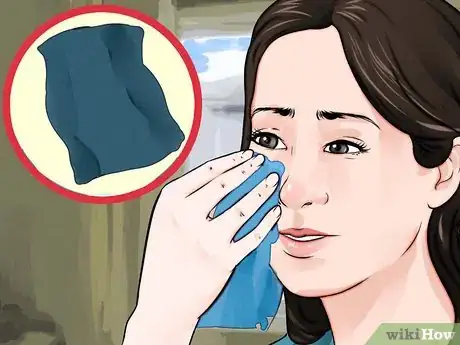
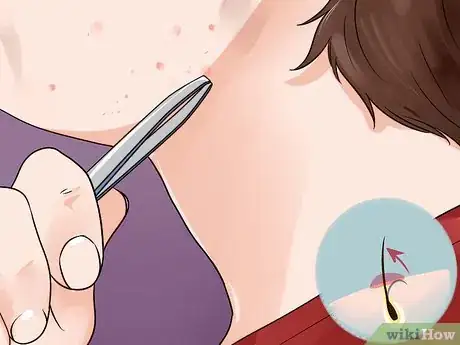
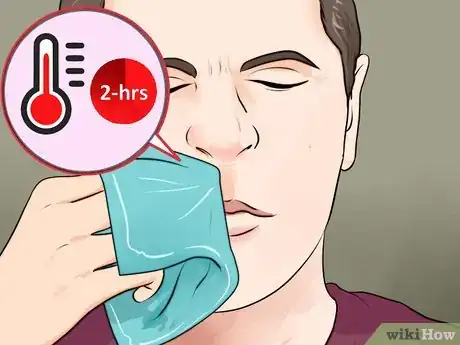
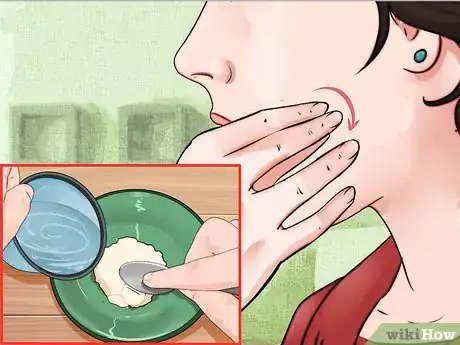
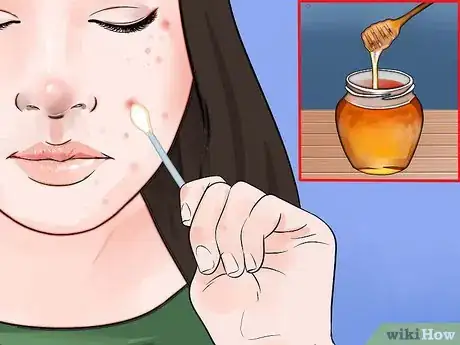
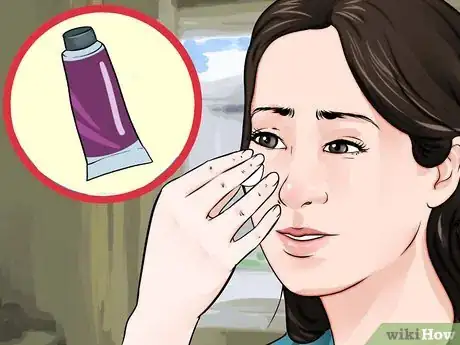
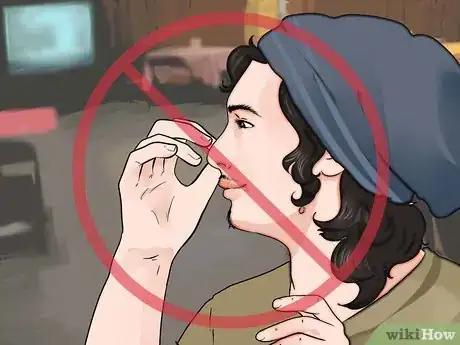

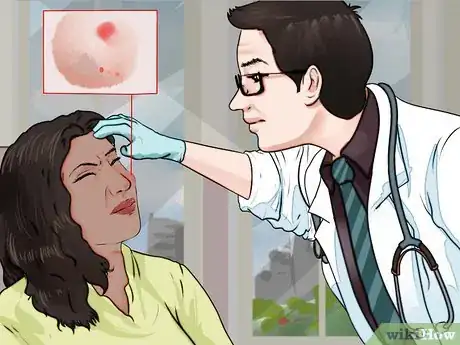
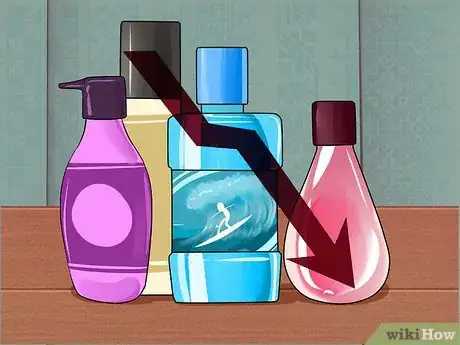
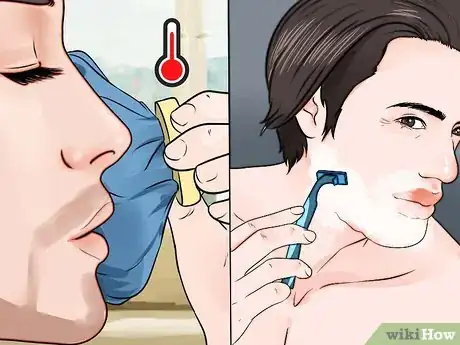
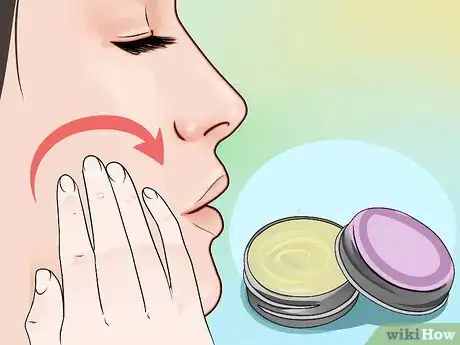

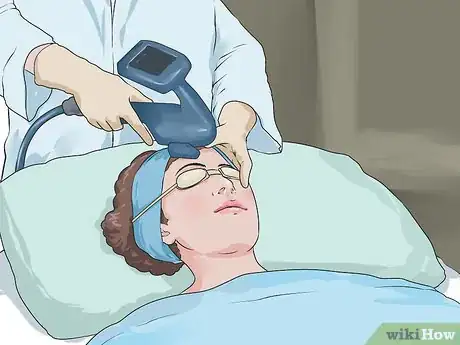
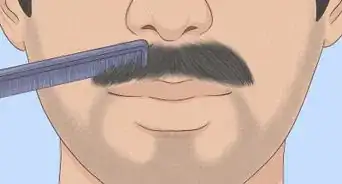
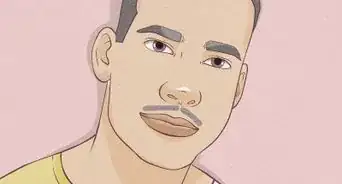
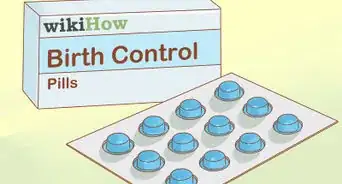
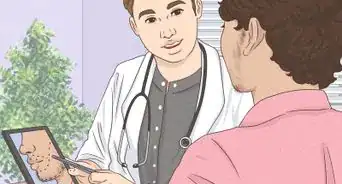

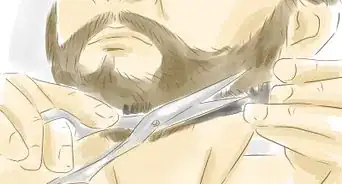

-Step-24-Version-2.webp)
